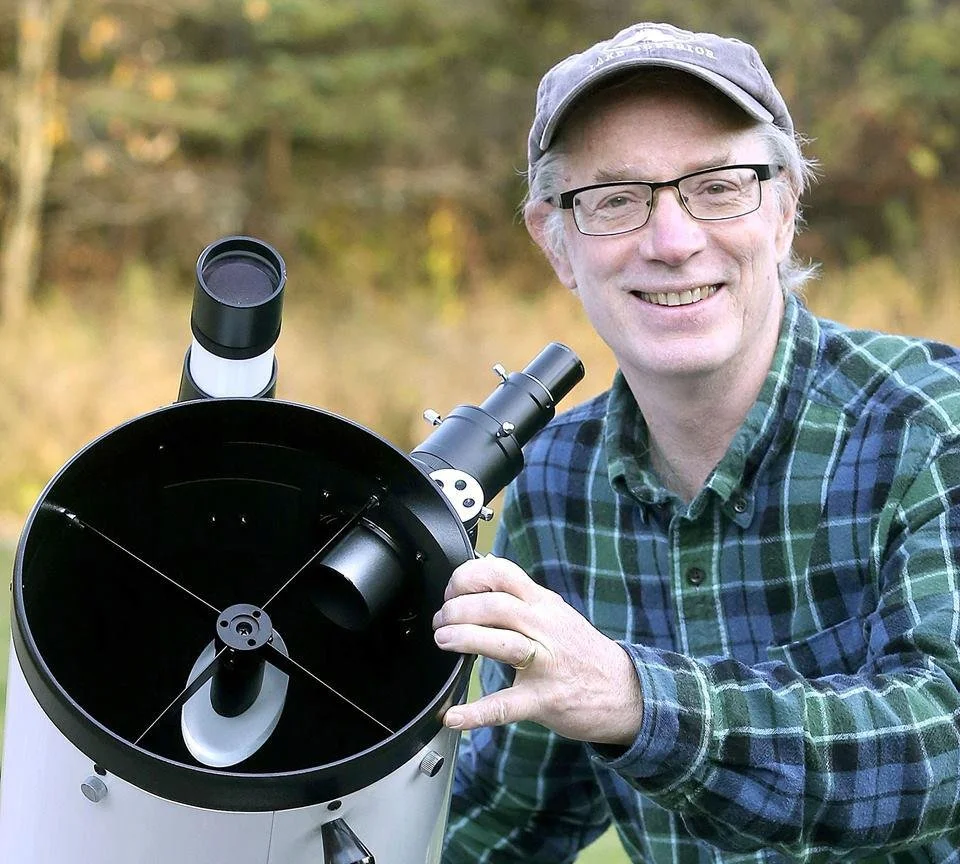August 2022 Night Sky Calendar
August is a time of transition. Jupiter and Saturn move into the evening sky, while Venus heads for the sun, soon to be lost in the glare of morning twilight. Mars affords a fine opportunity to spot the remote planet Uranus. Although the full moon will spoil the month’s biggest astronomical event − the Perseid meteor shower − it won’t snuff it out. You’ll still see meteors, so don’t miss the show the night of August 12- 13.
As the Big Dipper slides northwest, the summer constellations Sagittarius, Cygnus, Aquila and Lyra dominate the southern sky. But even as the season reaches its climax, winter sends us a reminder: mighty Orion and his three belt stars rise in the southeast before the start of morning twilight near month’s end.
*Note: When “a.m.” follows the date, it refers to an event visible in the morning sky after midnight. All times are Central Daylight Time (CDT) unless otherwise noted.
Events:
Aug. 1 – Mars in conjunction with Uranus, passing 1.4° to its south. With the help of the Red Planet, you can spot Uranus in a pair of binoculars. One degree is equal to the width of your little finger held at arm’s length against the sky. Most binoculars have fields of view of 5-6°. For a detailed map to help you find the distant planet, Google my blog Astro Bob.
Aug. 5 – First quarter moon
Aug. 11 – Full Sturgeon Moon
Aug. 11 – The full moon will pass about 5° below (south) of Saturn in conjunction. Moon-planet pairings like these are a great way to use the moon as a planet- finder.
Aug. 12-13 – Peak of the annual Perseid meteor shower. Were it not for the nearly full moon we might see some 60-80 meteors per hour. But bright moonlight will cut that number in half. No worries. It’s still well worth your while and a lot of fun to watch especially when shared with family or friends. All you need is a reclining chair and a wide-open view of the night sky. Whatever direction you choose to watch, be sure to face away from the moon to keep your eyes as dark-adapted as possible. Watch from 10 p.m. till dawn local time. The later you’re up the more meteors you’ll see.
Perseid fireball during the August 2016 shower. Credit: Siarakduz / CC BY-SA 4.0
Aug. 14 – Saturn at opposition, when it’s brightest and closest to Earth for the year. Tonight, it shines from a distance of 823.7 million miles or 74 light-minutes. The planet resides in eastern Capricornus and rises into good view in the southeastern sky around 10-10:30 p.m. local time. It’s the only bright “star” in that direction. Telescopes will show the north face of Saturn’s famous rings, which are tipped 13° in our direction.
Aug. 14 – Waning gibbous moon passes 4° below Jupiter in conjunction
Aug. 18 – Last quarter moon
Aug. 19 a.m. – Waning moon passes 2° above (north) of Mars in conjunction. Use binoculars to see the Seven Sisters star cluster a few degrees to the moon’s upper left. A pretty trio!
Aug. 25 a.m. – Thin crescent moon hovers 6° above Venus during mid-morning twilight. Venus has been approaching the sun all summer and will disappear from view in the bright glow of twilight later this month.
Aug. 27 – New Moon
Aug. 29 – Thin crescent moon returns to the evening sky. Watch for a sliver of light low in the west about 20 minutes after sunset.
Bob King is an amateur astronomer, author, and passionate educator. He served as a photographer and photo editor at the Duluth News Tribune for 39 years and taught at the UMD planetarium. Bob’s work had a great impact on Voyageurs National Park. To achieve International Dark Sky Park certification, the park was required to host dark sky education events. Through the Night Sky Explorer webinars, the Conservancy was able to fulfill this component and help secure the certification for Voyageurs National Park. We can’t thank Bob King enough for sharing his talents and knowledge with the Conservancy community to support dark sky preservation.


